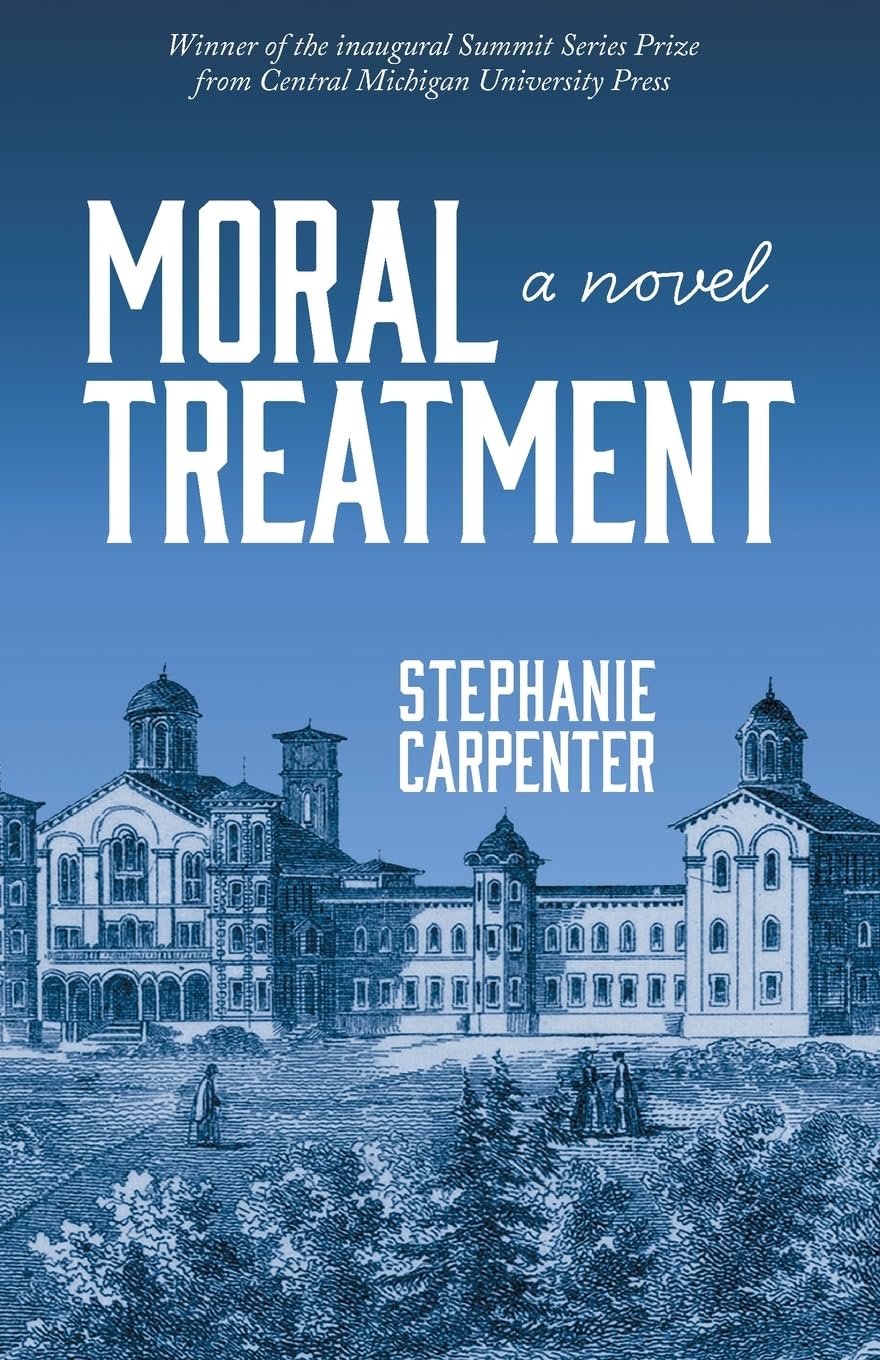Moral Treatment: A Novel
- By Stephanie Carpenter
- Central Michigan University Press
- 374 pp.
- Reviewed by Deidre Swesnik
- March 19, 2025
In 19th-century Michigan, “hysterical” women find themselves locked away.

When Stephanie Carpenter’s Moral Treatment opens, it’s 1889 in Michigan, and young Dr. Foley is trying to make a name for himself in the world. He rides out to a rich lumberman’s home to discern whether the man’s 17-year-old daughter is losing her mind. The law says that two physicians’ opinions are needed to commit someone to a psychiatric hospital, and one well-known local doctor has already signed off on Amy Underwood’s “pubescent insanity” diagnosis.
As Foley approaches the estate, he reflects on how times are changing:
“It’s a warm September evening; what trees haven’t been felled by the lumber company blush red and orange. On autumn nights in past years, young men drove this road with their sweethearts and Foley had hoped one day to do the same. Now it seems that the hardwoods will all be harvested before he manages to court anyone.”
When he arrives and finally meets Amy, he’s not entirely convinced the teen should be sent away. But he understands what his refusal to do so could mean for his own career. He signs the fateful order, reasoning that he isn’t truly responsible for what comes next, given that the older doctor had already made the decision.
What comes next is that Amy’s life is irreparably changed by Foley, even though we never see him again. This is the first of many oftentimes discrete steps — justified in the moment as being noble and necessary — that accumulate and cause devastation for her. The same is true for many of the other women sent to the facility for questionable (if not outright unjust) reasons.
The asylum’s superintendent — “the doctor” — feels for his patients yet insists he’s providing a refuge for them. (One woman is admitted yearly; her husband sends her to the hospital to get her out of the way during haying season.) “Many of them have been ill-treated,” the doctor believes of his charges. “‘Domestic infelicity’ is a common exciting cause of their insanity, as is ‘grief, care and anxiety.’”
He describes Amy’s condition as coming at the “onset of menstruation at age fourteen, roughly coincident with her psychic troubles.” Despite what he thinks of the place he oversees, many of the women’s experiences show it to be a far cry from a refuge, with involuntary drugging, restraints, and the denial of books, paper, and any communication with family.
As go the women, so go the trees.
When she was a child, Amy loved to play in the woods, which covered the countryside near her house as far as the eye could see. “Well, she can’t be playing around in those woods much longer,” her father announced one day. “There’s a crew coming in to clear out the hardwoods.” When Amy’s stepmother questioned how to keep her from the forest, he retorted, “She’s a girl: tell her to stay inside. Lock her up if you have to.”
Trapped indoors, Amy began to fall apart. By the time she’s committed, she has developed a habit of picking at her face, causing terrible and — worse for an eligible young lady — ugly scars. The hospital grounds, too, are being stripped of their trees, leaving behind an unsightly landscape. “Behind the building are hills and trees; in front of the building is a lawn scabbed with stumps.” It isn’t until she earns the privilege of walking the grounds that Amy sees the devastation for herself:
“[S]he would like to run again through the clutching trees without ever being caught. Those trees are stumps now, waiting to trip her.”
The novel presents a number of nuanced and compelling mysteries as it progresses. Do the doctors mean well? Are the women truly ill, or are they being made that way by the forced hospitalization? How does one patient end up pregnant? And what’s to be done about the environmental degradation happening all around? While the reader is able to see inside the minds of many different characters, none has the full picture. Given conflicting information and few tools with which to unearth the truth, we ourselves feel like we’re in the 19th century, grasping for answers with no reliable way to find them.
“Moral treatment” was an authorized method for dealing with psychiatric patients in the 1800s. By the turn of the century, younger clinicians — including some in this book — began to see it as unscientific and pushed to “modernize” care by adopting more invasive measures. There is a haunting sense throughout this story that neither approach had women’s best interests at heart.
Deidre Swesnik is a third-generation Washingtonian. When she isn’t reading or hanging with family and friends, she is a civil-rights and housing advocate.

